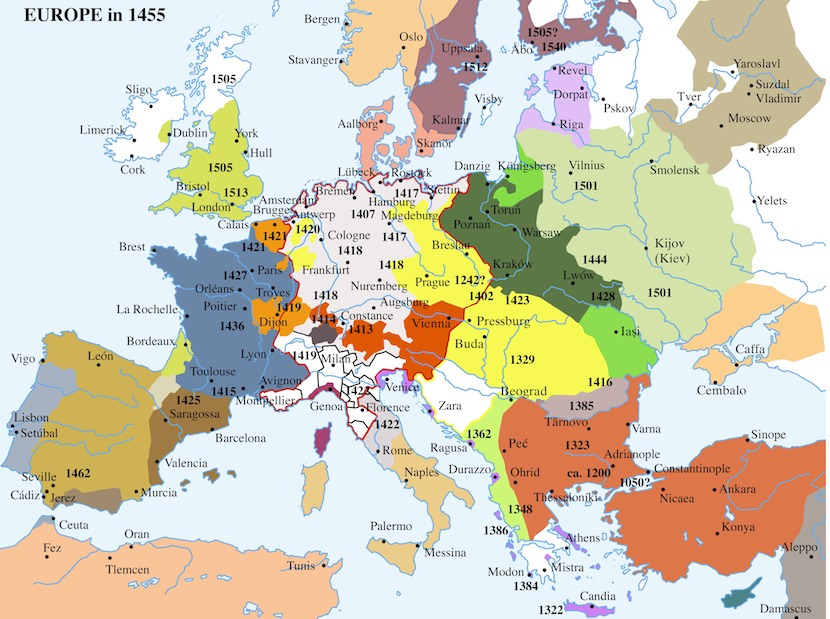Many Roma moved on towards Central and Western Europe during the Turkish expansion in the XV century. For not all Roma settled in the Balkan or even found work. In 1416, “Emaus, gentleman from Egypt and his 120 people” arrived in the Romanian city of Brasov (Brasso, Kronstat) and asked the city authorities for food and money for his travels. From there they travelled through Central Europe.

Certain historical documents point out to a small “infiltration” of Roma in Germany a little before, during the 1416-17 years. These may have been the forerunners of Western European Roma.
In 1423, one finds texts about the Roma in Spis (Slovakia), where King Sigismund gave travel documents (passports) to the “Vojevode” – leader of the Roma, a certain Ladislav. This and others who followed travelled further through Europe and some settled in France. Due to these travel documents, Roma were called Bohémiens in France and Boemianos in the Provence. In 1420, the “Roma count” Andreas is mentioned in Holland in the city of Deventer. In 1421, one finds him in Belgium and 1422 in Alsace. The Chronica di Bologna mentions Andreas and his people as having arrived in 1422.
The interesting fact is that the Forli chronicle mentions that Andreas’ Roma originated from India. They later went to Rome and got travel documents from the Pope. Another “count of Little Egypt”, a certain Michael is also mentioned in Rome and he also received similar documents.
In 1425, in Zaragossa (Spain), Johann, a “gentleman of Little Egypt” and his clan as well as a little earlier, a “count” Thomas are mentioned by the city archives. All these Rroma had travel documents from different sources, mostly from different European Aristocrats. A “count”, presumably Thomas, is mentionned in St. Denis near Paris in 1427.
Around the same period, the “king” Zindelo or Zindel is known to have been in Bavaria in 1439 and his trace was lost a little later. Other “counts of Little Egypt” are known to have made the following travels through Europe, as specified in different sources from the years 1418-1477:
“Count” Panuel travelled between 1417-1430 in Germany, near the Baltic states and also went to Leipzig and Metz.
“Counts” Manuel and Andreas arrived in Switzerland from where Andreas went to Bologna in Italy and Rome then to the Provence, Spain and finally in England.
“Count” Michael, is mentioned in Switzerland from which he went to Strasburg, Augsburg, Münster and Meissen. We find his clan in Lucerne as well as in Barcelona.
What do we know about those Roma groups (or clans) which travelled throughout Europe around these times? All sources concord to say that these Roma groups were rather small, of not more than a 100 people, including women and children. From the know available sources, it is quite obvious that their leaders called themselves “counts” or even “kings” from “Little Egypt”. The Roma who travelled told many Europeans that they indeed came from Egypt, that they originally were Christians who had lost their faith and as a result, were banished and forced to travel. This legend remained alive for a very long period in the minds of Western Europeans and is responsible for the names they gave the Roma: Gypsies and Gitanos, derived from Egyptians. Even now, many Roma tell the story that, long time ago, their leader was called “Faraó”. In Hungary, Rroma were even called “Faraó népe”, the Pharaoh’s people.